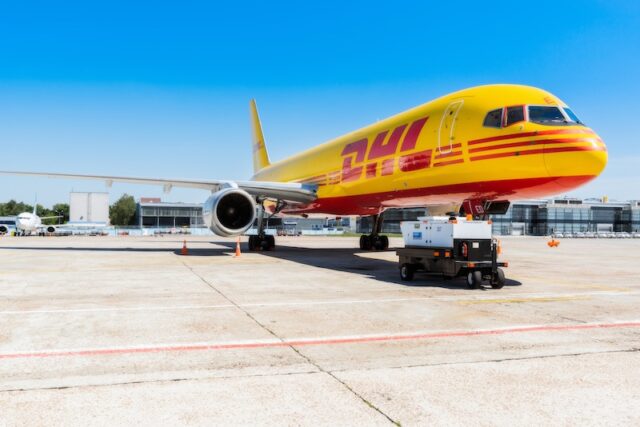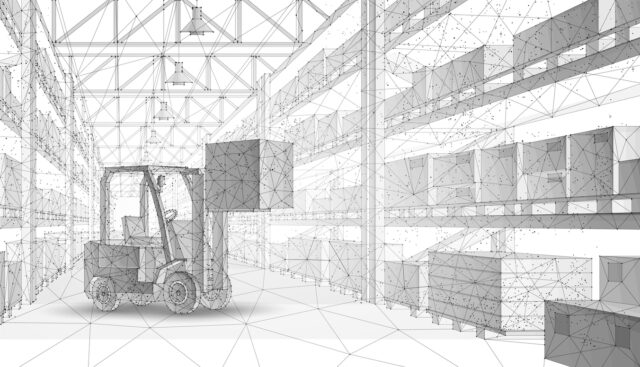As urban populations increase, along with the need for decarbonised supply chains, the electrification of last mile logistics is emerging as an essential step towards a sustainable economic future.
Around the world, the momentum of last mile electrification is growing. However, questions still remain connected to overcoming barriers to adoption and implementing a fully electrified last mile supply chain. Finding answers is becoming more and more urgent as the climate crisis worsens while global urban populations swell.
E-commerce in the age of the megacity
Cities will account for well over 50% of global consumption by the end of 2025. Urban populations are growing faster than rural ones. Migration into urban spaces is predicted to result 6.419 billion people living in cities by 2050.
Research by Frost & Sullivan projects that, by next year, the world will be home to 35 megacities—defined as urban areas with a population of 10 million people or more.
The largest megacity in the world is sometimes identified the Pearl River Delta in the Guangdong-Hong Kong-Macau Greater Bay Area region. Guangzhou, representing the Pearl River Delta, is estimated to have around 65,100,000 inhabitants. That’s roughly equal to the population of the UK.
Urban populations are growing. This trend is overlapping with the growth in e-commerce to place profound strain on the logistics networks serving urban centres. This is especially pronounced in megacities, where population size and density compounds the issue.
These megacities are witnessing a dramatic growth in the frequency of parcel movement owing to ongoing e-commerce growth. Analysis by Civitas, a network of European cities, calculated that there are between 300 and 400 goods transports per 1,000 people per day in some of Western Europe’s larger cities.
Megacities see at least 3 million deliveries being made daily.
E-commerce supply chains in an increasingly urbanised world
The global e-commerce logistics sector is predicted to experience more than 20% growth over the next decade.
“In this e-commerce boom, the volume of packages is only going up,” says Josh Garnham, co-founder at Packfleet, an all-electric last mile delivery company that operates in London. Packfleet, along with other supply chain operators (large and small) are faced with an increasingly complicated proposition.
E-commerce and urban growth are driving up demand for logistics services covering last mile delivery. However, at the same time, the need to reduce the environmental impact of supply chains is becoming increasingly urgent.
As noted in a report by last mile delivery platform company Stuart in 2022, companies in the logistic sector are “part of a value chain that must remain profitable while urgently decreasing its negative impact on the environment and the people supporting it.”
Garnham adds: “A sustainability revolution in e-commerce is needed in 2024.” He adds that petrol and diesel delivery fleets “negatively impact us and the environment” noting their contribution to congestion, “as well as noise and air pollution.”
Electric vehicles are key to decarbonising the last mile
Tackling decarbonisation at a time when logistics volumes are only going up is a challenging prospect. Garnham admits that “the pressure is on to make more sustainable changes,” adding that “if parcel volume isn’t going to decrease, then we need to make sure that the environmental impact of delivery does.”
Electric vehicle adoption is a compelling fit for last mile delivery for a few reasons. Firstly, electric vehicle ranges and efficiency capabilities are particularly suited to driving for shorter distances with frequent stops and starts. Secondly, as noted by Deloitte researchers, “as urbanisation and e-commerce surge, last mile delivery has become a critical and dynamic sector, where the implications, advantages, and challenges of EV adoption are particularly pronounced.”
What will an electrified last mile supply chain look like?
There are three primary characteristics that a successfully electrified last mile logistics sector will display. First, the transformation will be technologically enabled. Secondly, upfront capital barriers to entry will see traditional ownership models evolve. And, lastly, widespread transformation in the industry will require significant infrastructural and regulatory support from governments.
Technology enabled
Primarily, the decarbonisation of the logistics sector will need to be underpinned by technology—specifically data and AI. Packfleet, for example, maximises the capabilities of its EV fleet by using technology to deploy that fleet more intelligently.
“Building our tech stack from the ground up, we’re able to be agile, reactive and drive the industry towards a more efficient and sustainable delivery alternative,” Garnham explains. “Routing is incredibly hard – roadworks, traffic, changes to the delivery time or location, they all impact it – but technology is allowing us to navigate all of these things in a few seconds.”
Stuart takes a similar approach with its platform. The company orchestrates its network of EVs, couriers, and other logistics vehicles in a way that reduces emissions and increases efficiency through smart routing, stacking deliveries, and reducing missed deliveries by means of on-demand features and omnichannel communication.
Similarly, Garnham adds that Packfleet uses “AI-enhanced technology to empower a fleet of zero-emission vehicles to provide hassle-free deliveries. Customers can pick delivery windows and redirect parcels in real-time.” As a result online purchases become “close to frictionless,” whilst also reducing emissions.
New ownership models
Investment in logistics fleets is a cap-ex heavy proposition. Reinvestment into the electrification of entire fleets may be beyond the scope of many organisations. This is especially true of those that aren’t operating as dedicated logistics companies.
As a result, traditional ownership models could evolve to encompass leasing or subscription services. Such an arrangement would increase flexibility in the short and medium term especially. Additionally, this shift would enable companies to take advantage of emerging EV technology and services without crippling upfront costs.
Supported by the public sector
Lastly, the public sector also has a role to play in creating the necessary regulatory, financial, and infrastructural conditions for an EV revolution.
John Gillan, UK general manager at Stuart, argues that governments “must step up for small businesses struggling with inflation, supply chain issues, and rising running costs to ease the burden and encourage more sustainable delivery practices.” He advocates for governments offering tax breaks or subsidies for EV adoption (like many have in the consumer space).
Whatever shape the process takes, it’s clear that the electrification of last mile logistics is complicated, challenging, and absolutely necessary. “Logistics is often the forgotten link in the e-commerce chain when it comes to sustainability, but it needs to be tackled if we’re to reach net zero goals,” Garnham reflects.
- Collaboration & Optimization
- Sustainability










